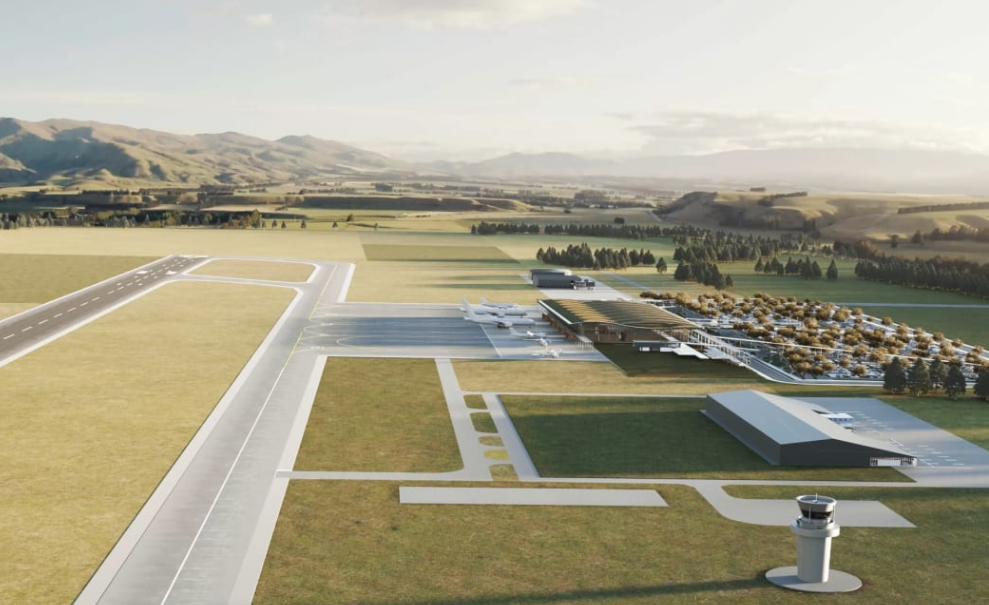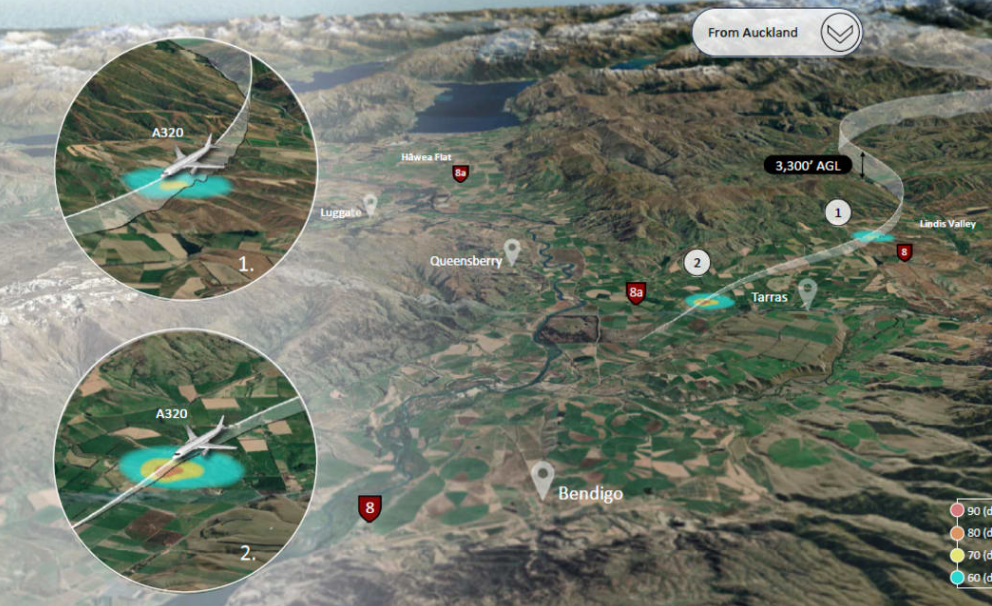Christchurch Airport has unveiled a tranche of documents relating to its controversial proposal to build an airport in the small Central Otago settlement, north of Cromwell.
Among the details released is Christchurch Airport's preferred runway alignment for the project.
The preferred alignment is northeast to the Lindis Valley and south to the Lake Dunstan Valley and it could see aircraft departing over Cromwell or through the Lindis Valley.

The nearby Queenstown Airport was predicted to reach 3.2 million passenger movements by 2032 on just over 22,000 flights.
Christchurch Airport said it meant by 2050, about 2.5 million passenger movements would have to be accommodated by Invercargill, Dunedin and Christchurch airports, with passengers then driving to Central Otago.
Its proposed airport could instead accommodate 3.7 million passenger movements already destined for the area.
In July 2020, it was revealed Christchurch International Airport had been buying up 750 hectares of farmland in Tarras for the project.
In May this year, the airport bought a further 40ha.
The project had been controversial since it was revealed with many raising concerns about over tourism, environmental impacts on the area around Tarras and fears a new airport was irresponsible in a climate crisis.

It would mean greater congestion on the existing roading network, it said.
At present, the average Central Otago passenger travelled 56km to the airport, by 2050 that would rise to 105km if the status quo remained. An airport at Tarras would keep that number around 59km.
Christchurch Airport chief strategy and stakeholder officer Michael Singleton said demand for air travel to and from Central Otago was likely to far exceed the region's current capacity over the next 30 years.
"This could result in the region spilling more passengers than it serves by 2040. Increasing capacity at existing infrastructure will only move the problem out a few years. This is likely to have a far greater impact on residents, as visitors are more likely to book earlier and pay higher fares," he said.
"Demand for travel to and from Central Otago will continue to grow even if air capacity is constrained. Doing nothing about air capacity constraints will simply cause congestion and inefficient travel patterns.
"If we do nothing, there could be between two and three people vying for every available seat to and from the region by 2050."

The preferred runway alignment was chosen for its safety, operational efficiency and for creating lesser noise impact on the communities in Central Otago, Singleton said.
"The alignment also provides greater flexibility for aircraft types, which is particularly important to enabling the next generation of low emissions," he said.
"Runway length is a key enabler for regional growth, connectivity, resilience and prosperity over the long term. This is why we spent time understanding the range of runway lengths realistically achievable on the site.
"Based on the information we've seen so far, a runway between 2200 and 2600 metres is likely to be feasible on the site and would provide Central Otago with infrastructure fit for a low carbon future.
"We now have a good idea of the size of the opportunity. Our focus is now sharpening and deepening as we build on this solid base of data and expert analysis."
The airport's chief executive, Justin Watson, said the work done to date was focussed on laying the groundwork for a good decision on the future of the project, whether an airport was built or not.
"We believe this is worth exploring. Our team has been working with experts to understand what the region might need in 20, 30 or 40 years and how a new Central Otago airport could support the social and economic well-being of the region.
"We know people in Central Otago are passionate about their place in the world and what happens to it. It's economy depends on the efficient movement of people and products, and while we're not making decisions yet, we are making sure we fully understand the impact of the options both now and for future generations."
The team would be holding drop-in sessions with the community in Tarras today, Cromwell tomorrow and Wānaka on Thursday.












